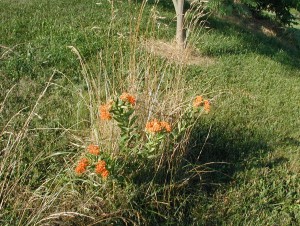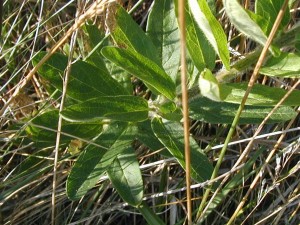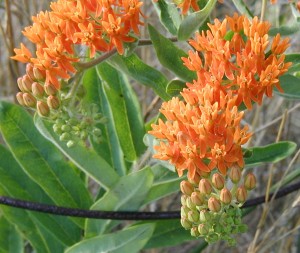Orange flowers are not as common in nature as white, yellow, red or purple ones. When you come across some brilliant orange blossoms, you definitely take notice. Brilliant flowers of the Butterfly Weed are easily seen in summertime fields of weeds. Even if the grass gets as tall as this native plant the flowers can be seen from a distance because of their bright orange color.

The Butterfly Weed, Asclepias tuberosa, is related to the common milkweed. You can see similarities in the leaves and flowers of these two members of the Milkweed family, Asclepiadaceae.
Oblong leaves alternate up the stiff mainstem of the foot and a half tall plant. Most milkweeds have opposite leaves or leaves in whorls. Stems are hairy. When broken the stems release a clear juice, not milky like other milkweeds.

The flower structure is unique to milkweeds. Milkweed flowers occur in loose umbels at the top of the plant. Five downward-pointing petals flare out below a five-pointed crown. The crown has five tips that connect to the united internal flower parts made up of stamens and stigma.

Seeds are held in elongated pods about 4-5 inches in length. Individual seeds are connected to feathery fluff that helps the seeds spread with the wind.
If you’re lucky enough to find this beautiful perennial plant, take home a few seed pods instead of digging up the whole plant. It has a long tap root, so it would be difficult to get the whole root for transplanting it successfully.
Butterfly-weed is a nice addition to any sunny flower garden, and as its name suggests it will draw butterflies to the area.
An alternate name for butterfly-weed is Pleurisy Root because Native Americans chewed the root for lung inflammations and bronchitis. Although the root has laxative, diuretic and expectorant qualities, it may be toxic in large doses, so it is not recommended to consume this pretty weed.